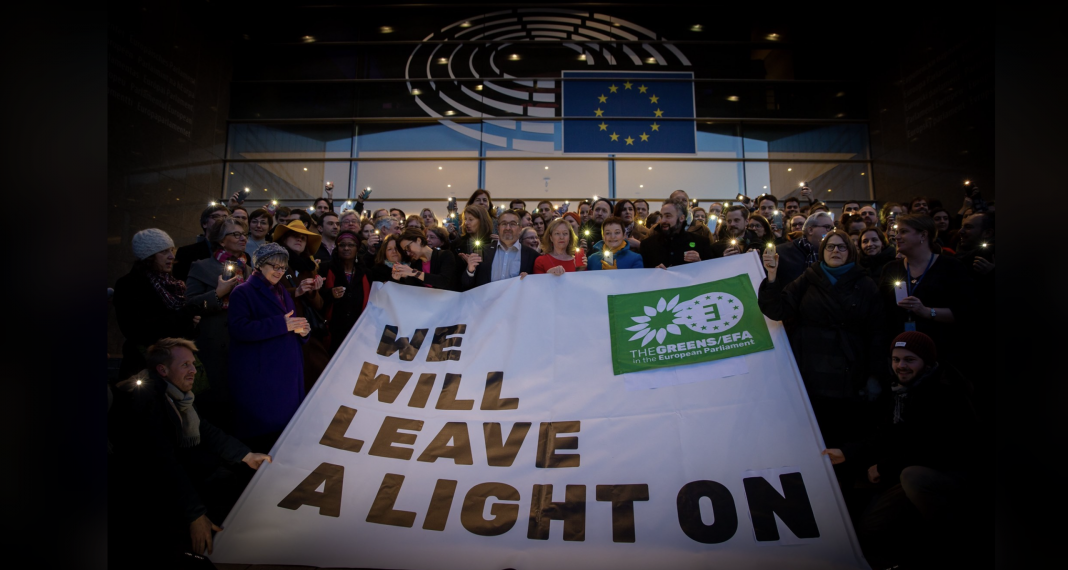The European Parliament elections scheduled for June 6-9, 2024 threaten to turn into a real disaster for the Greens. Today, the EP political group “Greens/European Free Alliance” (EFA/EFA), which has 72 deputies in its ranks, according to various sociological surveys, may lose up to 30 mandates in the upcoming European elections and fall to the bottom of the “standings”, not much ahead of the “left-wing” outsiders.
However, the group’s leadership is making a “good game” out of a bad game, hoping that they will be able to mobilize their electorate, whose ranks will be filled by many of those who consider climate change a very serious problem (93% of Europeans). And then, at the last moment, the undecideds will make the right choice in favor of the Greens and refute all the pessimistic forecasts. This was the case five years ago, and they expect it to be the case this time as well.
In this piece Ascolta continues to analyze the electoral mood of European voters, as well as the positions of the main political groups on the eve of the upcoming elections to the European Parliament. In particular, the analysis of the positions of the political parties belonging to the EP group “Greens/European Free Alliance” shows a tendency to a serious decline in support, largely due to the flow of votes to the right-wing and populists.
This Content Is Only For Subscribers
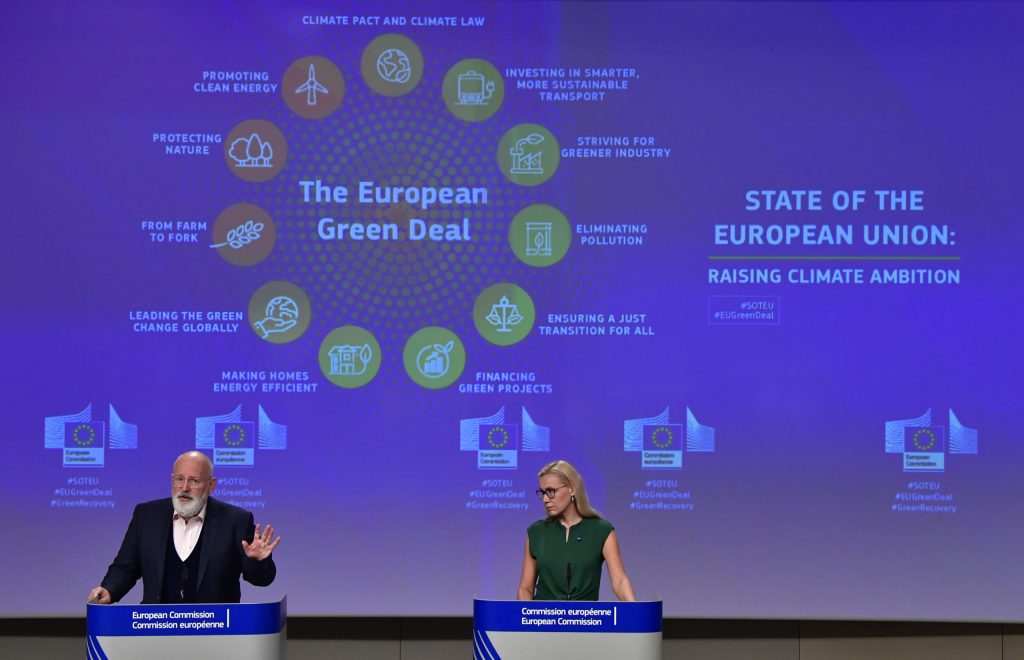
The worst part of the Greens’ miscalculations is the arithmetic in the form of high percentages of voter support for climate change as a serious problem. And that’s a percentage that Green leaders automatically transfer to their parties. By voting for the Greens in 2019, a part of the electorate wanted to use the EP elections to express distrust in their governments, to show them that they are dissatisfied with the course being pursued and the social and economic policies being implemented. People did not want to vote for the classical political parties, believing that they did not deserve their trust. At the same time, they considered it wrong and unworthy to vote for Euroskeptics, nationalists, populists and the extreme right (or those who were labeled as such in the information space). Therefore, they did the opposite: they gave their votes to the Greens and liberals.
In turn, the EU establishment squeezed the most out of the Greens’ success. The results of the vote were proclaimed a vote of confidence in the “green course”, a popular will in favor of the strategy of building a carbon-free climate-neutral economy at any cost and in the shortest possible time, a carte blanche for the formulation of such a strategy, its legislative formulation and strict implementation. Although, of course, no carte blanche was given by the voters to either the EU leadership or the elites of the member states. Therefore, the fiasco of the “Greens” in the upcoming elections to the European Parliament is a natural process, because the policy of “green transition”, which is a heavy burden on the shoulders of the average voter, unlike the European establishment, is perceived by them much more critically. In Germany, which is the “green heart” of Europe, the rating of the Union90/Green party has never been so low since 2018. Actually today, for the European Greens, this is no longer a case, but a steady trend. Although five years ago things looked different, and very optimistic.
The «swan song» of the Greens
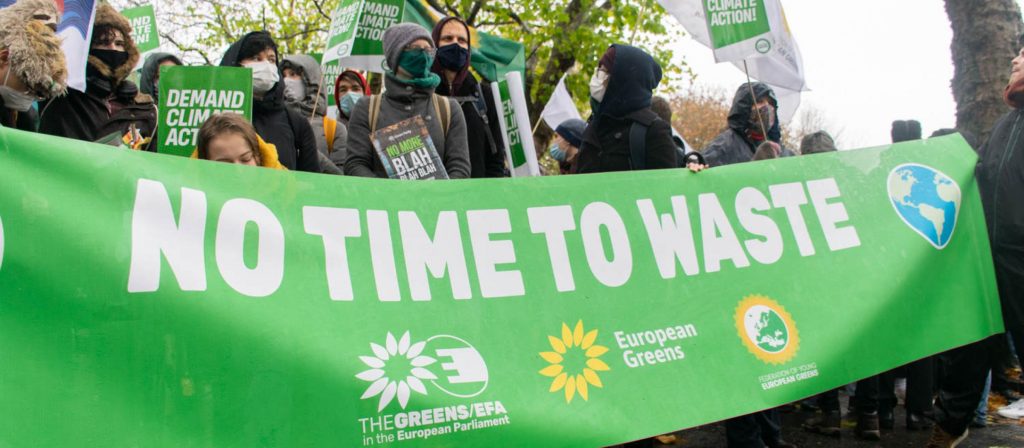
In the 2019 European Parliament elections, the Greens were the main opening act of the campaign. Previously outside the Old World political mainstream, they won 74 seats for the first time in forty years, instead of 52 between 2014 and 2019, and became the fourth largest political group in the EP.
It is worth noting that the development of political ecology in Europe has occurred in a wave-like manner, with upswings (1980s, late 1990s – early 21st century.) followed by downswings. Until 2017-2019, the “Greens” most often found themselves outside the executive power even in Western European countries (France, Spain, Germany), where their ideas were popular. The peak of the growth of their positions was the government coalition in Germany (with the Social Democratic Party of Germany (SPD) in 1998-2005). After its collapse, the marginalization of the Greens began, leaving them out of government structures for a long time.
The “green renaissance” took place in 2018, and the 2019 European Parliament elections only recorded the strength of the “green wave” spreading across the Old World. In many ways, the factor that predetermined the success of environmentalists was their consolidated campaign, based on a common program, which was presented by the European Green Party in the run-up to the elections. Despite the fact that the EPP was made up of ideologically diverse environmentalist parties, its 2019 election manifesto had a distinctly left-wing and social character.
This is evidenced by the following statement: “The financial crisis and austerity policies have driven millions into poverty, while large multinational corporations evade taxes”. Traditionally, an important component of the joint green campaign has been the fight for democratization of the EU. This point was a distinctive feature of the environmentalists’ political strategy. The foreign policy part of the EPZ manifesto was also peculiar, as it reaffirmed the pacifism of environmentalists and their commitment to multilateral international institutions, primarily the UN. Also, European environmentalists once again staked on promoting the principles of multiculturalism on a global and European scale.
All of these components were the ingredients of the Greens’ tremendous success in the 2019 European Parliament elections. Of course, there were also objective reasons for this impressive result, in particular, due to the apparent rise in the “ecological consciousness of Europeans”. Shortly before the elections, “green” politicians noted that the rise of their movement is largely due to such factors as “fear of pesticides, the fight against climate change, ‘dieselgate’, air pollution…”.
«Green» leaders
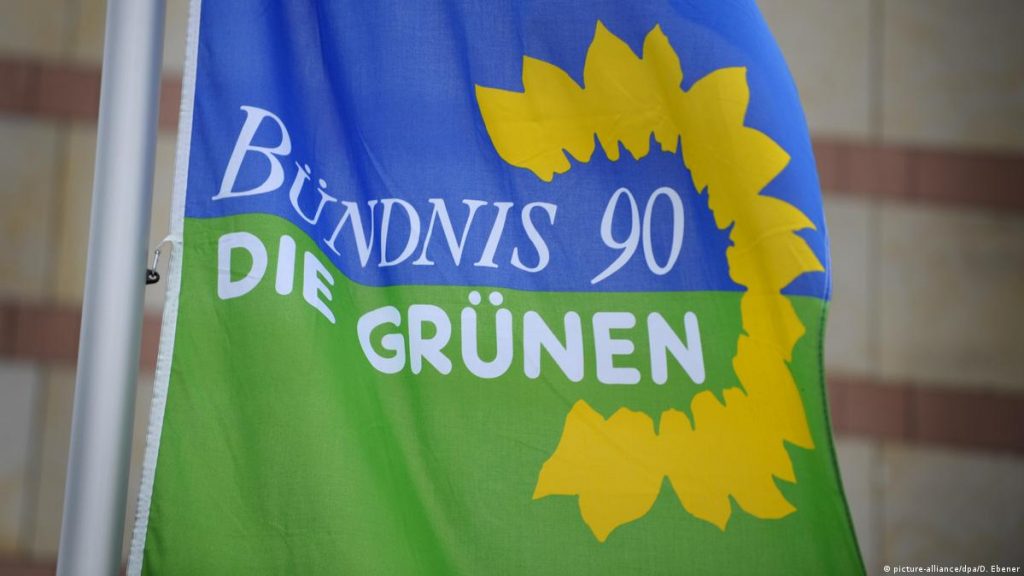
The main winner within the political group “Greens/European Free Alliance” in the European elections 2019 can be safely called the German party “Union 90/Greens”. This party has played a leading role in the political environmentalist movement in Europe before. In May 2019, however, it achieved an unprecedented result for itself, coming in second place overall (and for the first time being the leading party on the left flank of German politics) with a record 20.5% of the vote and 21 mandates in the EP. This was the best result in the entire European “green” family.
The secret of the success of the German Greens can be explained by several factors. First, the Germans’ deep concern for the environment, which was central to the Greens’ program. Secondly, the German citizens’ attention to the problem of the national debt, the stability of the euro, and peace and security – everything that the Christian Democrats and Social Democrats talked about a lot – has decreased. The crisis of these parties is one of the main reasons for the Greens’ growing popularity. This is especially true of the SPD: they were junior partners in three of Merkel’s four governments and have lost their ideological identity in the eyes of voters. Therefore, the Greens have partly begun to claim the role of the main left-wing force.
Third, the crisis of the old parties did not start yesterday. In the 2017 Bundestag elections, many of their former voters supported Alternative for Germany. In particular, the far right became the most popular party among German workers, who had been the nuclear electorate of the Social Democrats for decades. The AdG’s rise in popularity was preceded by the immigration crisis of 2015-2016. In the years that followed, the situation in Germany was relatively stable and prosperous, and the influx of illegal migrants, which had long been perceived as the main threat, fell to second place on the list of Germans’ worries. Now discontent with the authorities was embodied by the Greens because German society is simply tired of the fact that in the last 14 years, since Merkel came to power, the power configuration has hardly changed. And the Greens looked like an opposition in the eyes of voters, but not as radical as the AdG, and the demand for radicality passed with the end of the migration crisis.
Fourth, in the European Parliament elections, the Union 90/Greens managed to mobilize their electorate better than other parties. According to one study, 650,000 potential supporters of the Greens did not vote. For the SPD 2.5 million people did not come to vote, for the AdG – 2.25 million. Support for the Greens was particularly high in large cities. After its success in the European Parliament elections, the Union 90/Greens were no longer perceived as a niche party with a single theme. In addition, different social groups had a positive attitude towards them. Left-wing voters were “bribed” by their social policy, skillfully taking over such topics from the disoriented German Social Democrats. According to experts, a significant number of Merkel’s centrist voters without party affiliation also switched to the Greens.
In addition to environmental protection, there were several other points in the Union 90/Greens program that resonated with the mood of German society. One was that the Greens in Germany are traditionally an anti-American party, especially critical of the administration of then US President Donald Trump. More Greens were also quite critical of the Turkish community in Germany: criticizing either the community itself for its lack of commitment to European values, or the country’s authorities for failing to integrate German Turks. This factor played a role and an estimated 100,000 people voted for the Greens, who supported the AdG in 2017. A month after the 2019 European Parliament elections, according to a poll released on June 1, the Union 90/Green party outpaced all other German political forces, including Angela Merkel’s Christian Democrats, in popularity for the first time in history. The Greens’ rating reached 27%, compared to 26% for the CDU/CSU.
The French party Europe-Ecologie-European Free Alliance (EELV) also made a significant contribution to the overall success of the Greens/European Free Alliance political group in the 2019 European Parliament elections, winning 13.5% and 12 seats in the elections. EELV became the third party in France, ahead of the “system parties” of the left and right – the Socialists and the Republicans – which are going through times of crisis. Their result was not a record. In the European elections of 2009, they received more than 16% and 16 parliamentary mandates. Nevertheless, no one predicted such success for them. On the contrary, many experts spoke about the decline of the environmentalist party, as the rhetoric of environmental protection and the fight against climate change was adopted by many parties.
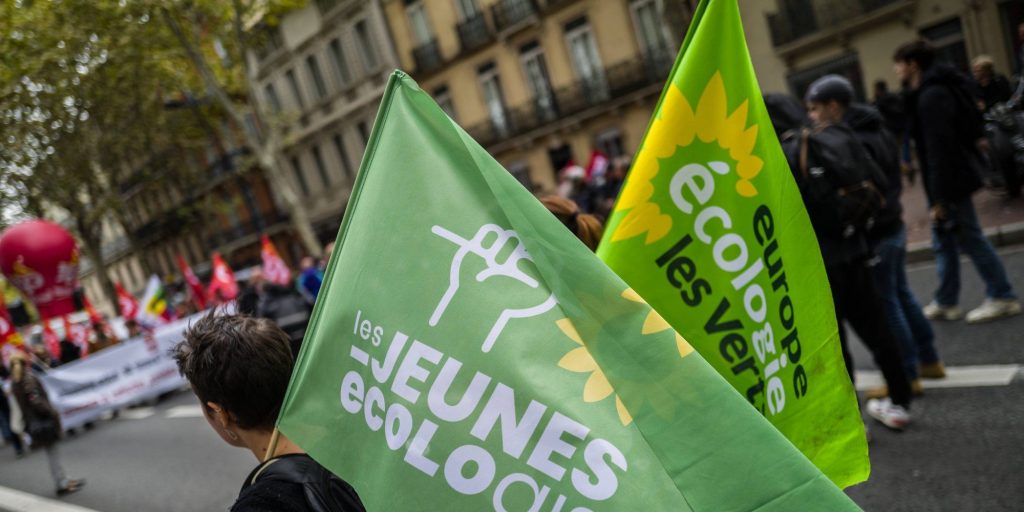
The leader of the electoral list, Yannick Jadot, who is by no means new to politics, also played his part in the party’s success. This was his third mandate as an MEP. However, so far he has not managed to come to the forefront, both in French politics and in his own party. It was Jadot who set a decisive course for an autonomous ecological list under the slogan “neither left nor right” and, refused to unite with the Socialists, saying that he was “not interested in the survival of the Socialist Party”. Most of the young electorate voted for the French environmentalists. The newspaper Le Monde published the results of a poll that showed a sharp jump in the rating of Yannick Jadot, who surpassed even the president of the country in popularity: he was approved by 32% of the French, while Emmanuel Macron – by 30%, and Marine Le Pen – by 28%.
Le Monde stated, “EELV is the first party among 18-34 year olds”. The figures spoke for themselves. Thus, of the 18-24 year olds, 25% voted for Jadot’s list, and 28% of the 25-38 year olds. During the campaign, Yanick Jadot proposed “political ecology as a new political model to replace the outdated social-democratic model. We must admit that the success of the French environmentalists was not accidental. After the elections to the European Parliament, the Europe-Ecology-Greens party continued its victorious march, winning municipal elections in Lyon, Marseille, Bordeaux, Strasbourg, Tours and Besançon as early as 2020, in some cases by a wide margin.
Stable Austria, Northern Europe and Benelux
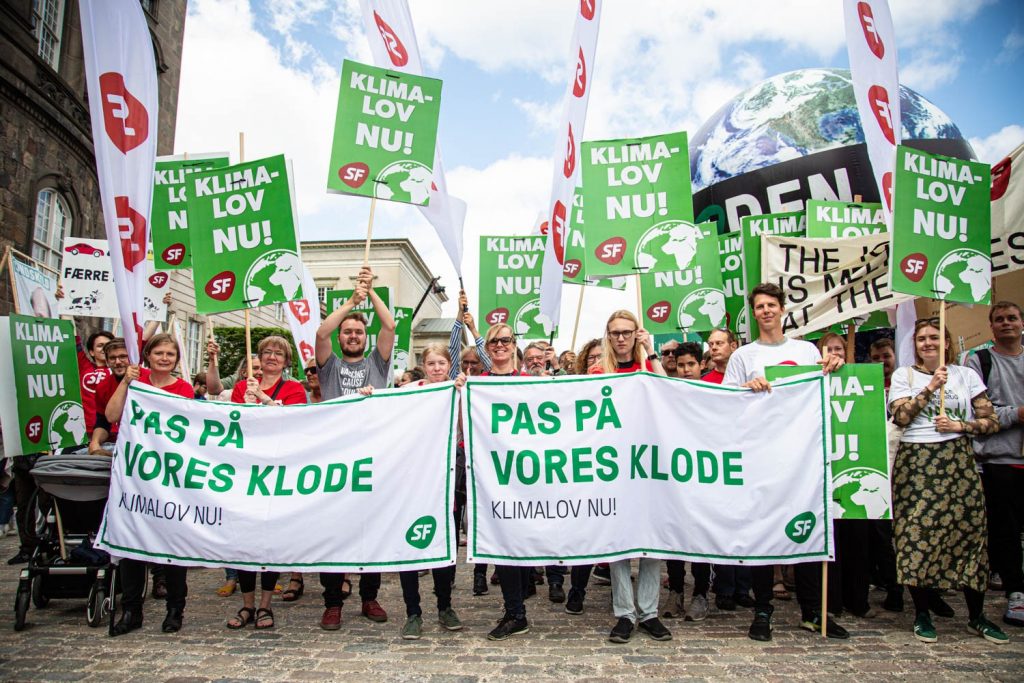
In this context, the success of the Austrian party Die Grünen – Die Grüne Alternative (Die Grünen – Die Grüne Alternative) in the 2019 European Parliament elections can also be noted. The Austrian Greens managed to cope with the difficulties and strengthened their position thanks to the European elections. Being, in fact, the only serious political force that openly and consistently defends the rights of foreign migrants and refugees, the “Green Alternative” managed to win back its voters, receiving a decent result in the EP elections – 14.1% of the votes and replenishing the Greens/European Free Alliance’s piggy bank with three parliamentary mandates. The Austrian Greens confirmed the high level of public support in September 2019. Having received 12.4% of the vote in the parliamentary elections, they not only returned to the Austrian National Council after a two-year break, but also joined the government coalition.
In Northern Europe, the Greens have traditionally had decent voter support. Experts noted the success of the Danish Socialist People’s Party (SF) in promoting eco-socialism, which continued the general trend of a large wave of support for green parties across Europe. The SNP was once founded as a left-socialist party, but in the early 21st century made an evolution towards political environmentalism, while remaining distinctly to the left of the Social Democrats. In the European elections, the list of the Socialist People’s Party won 13.2% of the vote, which earned the party two parliamentary mandates. However, in the June parliamentary elections, the SNP, although improving on its previous performance, won only 7.7% of the vote. However, the party’s 14 mandates helped the formation of a social democratic government, and the SNP itself has been part of the center-left parliamentary majority since the end of June 2019.
The Finnish party “Green Alliance” (VIHR) also showed a good result in the last EP elections, having gained 16% of the votes and managed to elect three representatives to the EP. The success of the Green Union is very significant in that it is probably the most “pro-European” party in Finland. In Northern Europe, where Eurosceptic sentiments are very strong, environmentalist parties are definitely in favor of deeper integration processes. The example of the “Green Union” also showed the inconsistency of results in European and national elections within one year. Having received 11.5% of the vote in the parliamentary elections in April, it won 20 parliamentary mandates and was able to enter the center-left government of Finland with three ministers.
Another successful Nordic force was the Green Party (MP) in Sweden. Although the MP has been involved in the government since 2014 as a junior partner of the Social Democrats, in the 2018 parliamentary elections this political force gained only 4.4% of the vote, barely holding on to the Riksdag. The result of the European elections showed that the Greens won back a significant portion of their voters; the party won 11.5% of the vote and three European mandates. In the case of the Swedish Greens, it should be noted that their election campaign revolved around social issues: “We want to reduce working hours and emphasize gender equality in wages as well as pensions. We wish to invest in sustainable technology and knowledge…”. The Nordic Greens increased the representation of the Greens/European Free Alliance group by 8 mandates in the European Parliament elections.
Political successes can also be seen in the case of “green” parties from the countries located in the western part of Europe. In the Benelux countries, especially in Belgium and Luxembourg, as emphasized by French expert D. Bois, “historically, there has been a strong influence of the environmentalist movement, which is at the head of numerous European initiatives in this area. There are two parties of environmentalists in Belgium: in the Flemish part of the “Greens” and in the Walloon part of the Francophone party “Confederation of Struggle for Ecology”, abbreviated as “Ecolo”. In the EP elections, the Belgian environmentalists acted as a single list in the alliance “Ecolo-Greens”, collecting in their regions 7.43% and 7.83% of votes respectively, which in total brought them 15.26% and three parliamentary mandates.
The May elections to the European Parliament also confirmed the high level of voter support for the Dutch Green Left Party (GroenLinks), which has already made significant political gains in recent years, becoming the country’s most influential left-wing party at national and regional levels. This left-environmentalist party won 10.9% of the vote and three seats in the EP. The left-oriented strategy of the Dutch environmentalists was reflected in one of their campaign slogans: “It’s all about people, not numbers. Around society, not markets. We always go with alternatives…”.
Despite the general rise of the green wave in the 2019 European Parliament elections, the success of the green parties cannot be absolutized. There are still regions in the EU where the level of support for green parties is very low. This applies above all to the countries of Central and Eastern Europe, as well as to most of the countries of the southern European zone. In addition, it is more likely that the results of elections to the European Parliament did not in all cases reflect the real political weight of the Green parties in their countries. Examples include Finland and Denmark, states that held national parliamentary elections in 2019 in which, with much higher turnout, the parties representing the Greens/European Free Alliance group in the EP received noticeably more modest voter support. Therefore, these examples rather suggest that the high performance of environmentalist parties in the EP elections should not be interpreted as a real level of public support at the national level. Nevertheless, the success of the Greens testified to the public demand for modernization of the European project, its approximation to human interests and that Europe can be different.
“Green” sunset
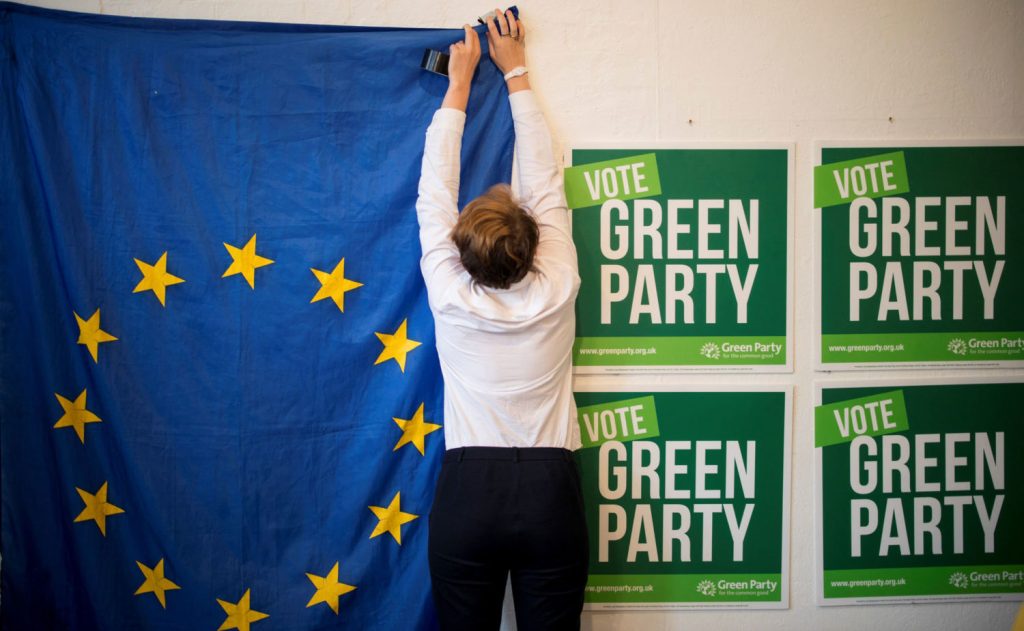
In the run-up to the European elections of 2024, the mood of the electorate is markedly different from that of 2019. Back then, many cities held marches in defense of the planet, against greenhouse emissions, and for renewable energy. The main theme of the election campaign was the fight against climate change. Today it is considered a priority by 52% of respondents, while 32% consider it a secondary issue. Also during the survey people were asked which of the biggest crises of the last 10 years has changed their view of the future to the greatest extent. On average, 19% of respondents across all countries said climate change. However, this figure was higher in Denmark at 29%, followed by France at 27%.
In other countries, climate change is virtually absent from future projections. For example, only 6% of Estonians said that it was the issue that had most changed their view of the future. For example, in Poland, despite a change of political course, backed by promises to take an ambitious stance on EU climate policy, only 11% of respondents consider climate change to be the crisis that has affected them most. This was revealed in an exclusive poll conducted for Euronews by Ipsos. According to the same poll, 54% of Europeans believe that their purchasing power is more important than the green deal.
It is important to note that the Green Deal is the largest economic course correction in the history of the EU. The large-scale environmental plan (hardly Ursula von der Leyen’s key project) suggests that by 2050 Europe should become the first climate-neutral continent (i.e. the use of green technologies and various initiatives will offset the negative impact of greenhouse gases on the climate). What’s more, just in early February, in the midst of the farm protests, the European Commission released a plan that would reduce Europe’s greenhouse gas emissions by 90 percent from 1990 levels by 2040. According to Politico, the draft document originally spelled out that emissions from agriculture should be reduced by 30 percent between 2015 and 2040. However, the final version does not include this phrase: it only mentions that “all sectors” (as well as ordinary Europeans who need to reconsider their eating habits and lifestyles) should contribute to the common cause.
Nevertheless, it is obvious that the set goals will not be achieved without serious changes in agriculture, which accounts for 11% of greenhouse gas emissions in the EU. And how to achieve changes and not ruin farmers (mostly small businesses with limited finances and equally limited capacity to adapt to new requirements) is a question that has not yet been answered.
“The Green Deal has become one of the reasons for a wave of powerful farmer protests across Europe. Thus, farmers’ unions believe that it harms the European market of agricultural products and hits farmers’ pockets. The “Green Deal” includes, in particular, the Farm to Fork program (Farm to Fork), designed not only to provide Europeans with fresh food, but also to minimize damage to nature. Luc Vernet of the European agricultural trade union FarmEurope notes: “Farm to Fork was originally conceived as a strategy that would improve our industry by imposing high quality standards on it. The assumption was that demanding consumers would pay more for clean food, bankers would support its production with their cheap money, and investment would flood into agriculture. It must be recognized that this equation can no longer be solved today. Citizens are turning away from more expensive products and the organic sector is experiencing serious difficulties. By this day, the period of cheap capital to invest in farming and livestock is over. All this is now a thing of the past.
The unbearable burden of leadership

After the triumph in the 2019 European Parliament elections, where the German Greens won 20.5% of the popular vote and increased the number of MEPs in the political group in the EP. “Greens/European Free Alliance” (Greens/European Free Alliance) by 21 people their next test awaited them – the elections to the Bundestag-2021.
The third place of the Union 90/Green Party was its best result at the German national level since its foundation. A few months before the election, the Greens were considered to be a contender for at least second place, if not for victory. In the end, they came third (affected by the extremely unsuccessful campaign of their leader Annalena Berbock) with 14.8% (plus 5.9% compared to 2017 and 118 seats in parliament). “We wanted more, but we couldn’t achieve it because of our own mistakes at the beginning of the election campaign, because of my mistakes. This time our efforts were not enough, but we got a mandate for the future!” – Annalena Berbok, co-chair of the party, smiling broadly, said after the election.
Following the election results, after painful negotiations, a “traffic light” coalition was formed, nicknamed after the party colors. It included the Social Democratic Party of Germany (SPD), the Alliance of 90/Greens and the Free Democratic Party (FDP). The leader of the Greens, Annalena Berbock, received the Foreign Minister’s portfolio. In addition, the environmentalists received the posts of Minister of Agriculture, Environment and Family. During the negotiations on coalition building, the most “pennies” were broken precisely around the “climate” requests of the “Greens”. And yet, the future government agreed on the desire to close coal-fired power plants earlier than a certain date, namely until 2030 (which was tentatively planned to be 2038). This decision was strongly criticized by many opponents, especially by the federal states dependent on coal mining.
As part of the implementation of climate protection measures and decarbonization of the economy, the new coalition also wanted to increase the share of renewable energy sources in Germany to 80% by 2030, to reach an electrolysis capacity of about 10 GW in hydrogen production, and the number of all-electric cars should reach 15 million. True, the new agreement did not set a specific date for phasing out cars with internal combustion engines. As time has shown, many of the “wishes” of the Greens were not only rejected for various reasons, but also led to a decline in the popularity of the Union 90/Green Party.
Two years into its rule, the “traffic light” coalition was showing extremely disappointing results. Only 14% of voters were ready to vote for the Reds – Chancellor Olaf Scholz’s Social Democrats. Their partners, the Greens, fared slightly better – they would get 15% of the vote, while the third, yellow partner, the business-oriented Free Democrats, fell short of the five percent threshold needed to enter parliament. Two years into its two-year tenure, nearly a quarter of the electorate has turned away from the ruling coalition, which came to power with a combined 52 percent rating.
But back to the Greens. According to the latest polls, their rating has dropped another point and is now 13%. Union 90/Greens will be number one on the ballot paper for the European Parliament elections. The Greens’ trademark is still climate policy, in which they believe major investments should be made, even if this means increasing public debt.
However, new “chips” are also emerging. No German party goes as far as the Greens when it comes to the long-term goals of the EU. They want to further develop the European Union and turn it into a “federal European state”. In their opinion, the EU should become “strategically sovereign”, i.e. be able to act independently in foreign and military policy. The party wants to support Ukraine even more. “Greens” see Ukraine as a future member of the EU, accession negotiations with which should begin as soon as possible. All other parties are much more cautious on this issue. The Union 90/Greens also has a liberal stance on migration and asylum policy, although most Germans are now very critical of this topic. If the Greens fail to mobilize their electorate as much as possible in the time left before the elections to the European Parliament, the election campaign will end disastrously for them. And their representation in the Greens/European Free Alliance group will be reduced by 9 MEP mandates.
Things are no better for the French Greens. The once-popular Europe-Ecology-Greens (EELV) party, which showed impressive results in the 2019 European Parliament elections, coming in third place and holding 12 deputies in the EP, has stepped down from the political scene by 2023 and changed its name to the Ecologists. This was preceded by a series of major blunders by the Greens. Encouraged by their success in European and, to a greater extent, municipal elections, they decided to build on it in the 2022 presidential elections by nominating Yannick Jadot, leader of the Europe-Ecology-Greens party, as their candidate. As a result, he scored only 4.63%, took the “honorable” sixth place out of twelve and bid farewell to his position as party leader.
The new leader, David Sorman, did not risk going to the elections to the National Assembly, which were held two months after the presidential elections, and joined Melanchon’s New People’s Ecological and Social Union (NUPES). Having received 23 mandates, “Europe-Ecology-Greens” not only acquired its own faction, but also increased its representation in the parliament by 21 people (according to the results of the 2017 elections, the “Greens” had 1 mandate).
It is worth noting that this was the last success of the French Greens. The renaming of the party and new leaders did not add anything to the “Environmentalists”. The party continues to defend the “green course”, which during the election campaign became the object of massive attacks from both the left and the right. According to Marie Toussaint, the number one on the “environmentalists” list, Europe’s “green course” is under threat as most parties undermine any steps towards combating climate change. The fact that the “green” agenda in France is clearly not in trend is eloquently evidenced by opinion polls, which classify the “environmentalists” as a group of parties struggling to overcome the 5% threshold. And although today 7% of support guarantees the parties’ entry into the European Parliament, however, the “Greens/European Free Alliance” group in the EP will lose 6 seats from the French “Greens” in comparison with the last elections.
Climate change with a scandalous flavor

It can already be stated that the results of the elections will reduce their representation in the “green” group of the European Parliament and the Austrian party “Greens – Green Alternative”, which at the last EP elections gained 14.1% of votes and received three parliamentary mandates. According to the Austrian Climate Institute, the majority of Austrians believe that renewable energy is the key to the country’s energy independence, especially in the context of Russia’s war against Ukraine, which has shown how dependent Europe, and therefore Austrian companies and households, are on fossil energy from the aggressor country. More than 70 percent of Austrians therefore expect Austria’s representatives at EU level to do more to promote climate protection. It would seem that the poll data favors the Greens in obtaining a good electoral “harvest.” All that is needed is a clear program, convincing messages and maximum mobilization of their electorate.
In the European Parliament elections, the Greens – Green Alternative party has set themselves a bar of at least 500,000 votes in favor of climate protection, which obviously indicates that they are trying to maintain their representation in the European Parliament from the last 2019 elections. At that time, 532,193 people voted for them. Also their election campaign is based on criticism of the Austrian People’s Party, which is part of the coalition with the Greens and which, according to the first number one of the Green list, Lena Schilling, hinders the climate activism of the Greens – Green Alternative party in the government. The Greens also accuse the European People’s Party, which includes ANP MPs, of a “campaign of lies” regarding the EU Renaturation Act.
This law envisages measures to restore at least 20 percent of areas at sea and on land to improve protected habitats in the EU by 2030. At the same time, the rhetoric of the “Greens” includes enough populist arguments about sustainable mobility, which they want to achieve, among other things, by reducing railway tariffs for communication between the capitals of the European Union, for example -10 cents per kilometer. This, in their opinion, will encourage more and more people to switch from air transportation to rail.
At the same time, the Greens are also exploiting the “migration” theme, saying that they voted against most of the points in the EU Asylum and Migration Pact, arguing that putting people in camps on the EU’s external borders would not be a solution. The Greens are also concerned that the Pact says nothing about people drowning in the Mediterranean Sea. In their opinion, the EU document lacks humanity and fast and fair procedures. It is worth noting that today Die Grünen are in the center of media attention not because of their original ideas, but because of the scandal in which the first number one of the “green” list, the young politician Lena Schilling, got caught.
It is likely that in an effort to draw more attention to herself, she made a series of accusations about her alleged harassment. There was an uproar in the Austrian media, the facts were not confirmed and the public began to accuse Schilling of manipulative behavior and a problematic attitude towards the truth. Werner Kogler, leader of the Greens – Green Alternative party and vice-chancellor, called the accusations “anonymous grumbling or farting.” One way or another, the scandal, though not significantly, had an impact on the party’s rating, which was pushed from fourth to fifth place in the “standings” by the liberals from NEOS (New Austria). Today, the level of electoral support for the Greens is 9.7%, which allows them to count on two MEP mandates.
«The Green Vikings» are retreating
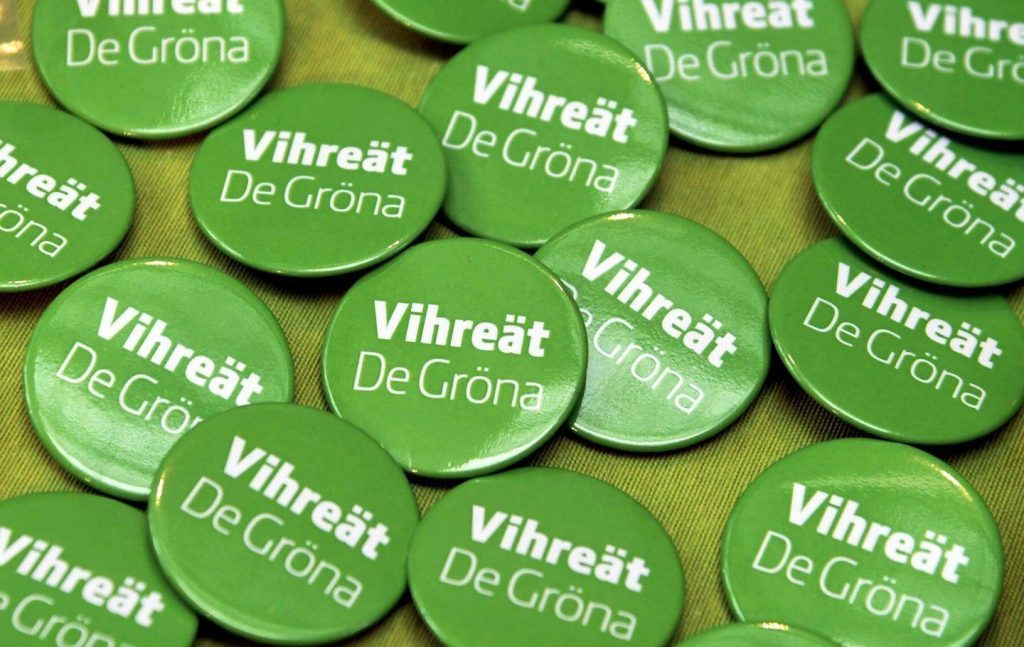
For a long time, the Nordic countries have been the leaders of European green politics, which naturally reflected in the rating of “green” parties, which had a good representation in the European Parliament, and especially in their national legislative structures. However, the pan-European trend towards a decline in the popularity of “green” political projects has not bypassed the Nordic countries. It is most significant in Finland, and especially in Sweden.
After the successful 2019 elections, in which the Swedish Green Party won 11.5% of the vote and three European mandates, its popularity has only begun to decline. It is worth noting that there are elements of a green agenda in the election programs of almost all Swedish political parties. Therefore, the Green Party had to make a unique political proposal that would favorably distinguish them from all other participants of the election marathon. And they made such a proposal, though not within the framework of the fight for “climate change”. Together with the Left, they opposed Sweden’s joining the North Atlantic Alliance, which, in the context of Russia’s full-scale aggression against Ukraine and voters’ concern about security issues, led to a collapse in their ratings. Today, the rating of the Swedish Green Party, just above the passing barrier, stands at 5%. According to forecasts, instead of three seats in the European Parliament, they will get one.
The situation is similar for the Finnish Green Union, which in the 2019 European elections won 16% of the vote and managed to get three representatives into the European Parliament. In addition, in the elections to the Finnish Eduskunta (parliament) held the same year, they gained 11.4%, and with 20 mandates, they joined the center-left government coalition. Being in power, however, did not go in favor of the “Greens” and already in the parliamentary elections of 2023 they lost 7 parliamentary mandates, gaining 7% of the support of the electorate. Today’s electoral dynamics leave them with the same percentage, and the Greens/European Free Alliance group in the European Parliament is likely to lose two deputies from Finland.
The one exception in the “Nordic family” of environmentalists is the Danish “Socialist People’s Party” (SF), which maintains its strong position among the country’s political parties, even though it is in government. In the 2022 elections to Denmark’s Folketing (parliament), it came fourth with 8.3% of the popular vote. Today, however, her rating has risen to 15% and she is among the top three electoral preferences, rightly expecting to retain her two European mandates.
Benelux’s Greens are losing ground
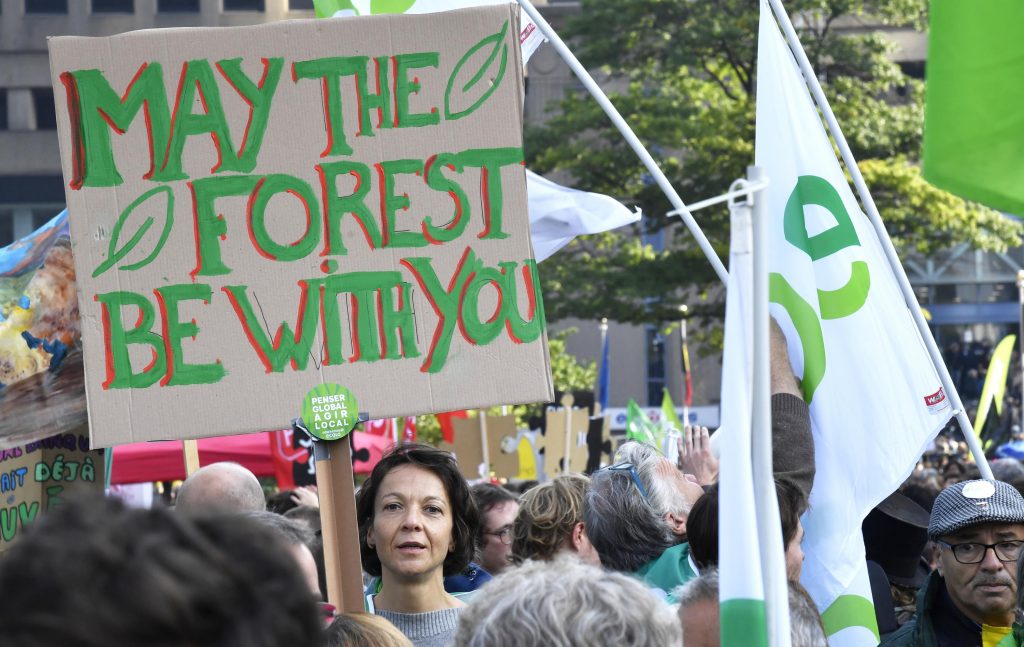
As far as the Benelux countries are concerned, the Greens have surrendered their positions there as well. As we have already mentioned above, the “green” movement in Belgium is represented by the Flemish “Greens”, and in the Walloon part by the party “Confederation of Struggle for Ecology”, abbreviated as “Ecolo”. According to the results of the last elections, in the European Parliament, the Greens had one mandate in the “Greens/European Free Alliance” group, and Ecollo had -2. It is worth noting that voter support reflects the ethno-national character of the parties. For example, Ecollo in the Brussels region now has 15%, while the Greens have 5%. In Flanders, Ecollo seems to have no chance at all, while the Greens retain their 5% rating. In its fiefdom of Wallonia, Ecollo has 13%, while the Greens are within the margin of error. If we look at the Belgian electoral landscape, Ecollo’s rating is -8% and the Greens’ is 4%. Taking into account the Belgian national quota of 15 seats in the European Parliament, Ecollo will lose one mandate and will be represented by one deputy, while the Greens will be outside the European Parliament altogether.
The situation is quite different for the Greens in the Netherlands. On the eve of the 2023 parliamentary elections, the Green Left party (GroenLinks), which won 10.9% of the vote in the last European Parliament elections and received three seats in the EP, created a unified list with the Social Democrats from the Labor Party (Pvda). Green Left leader Jesse Klaver said he would not contest the leadership of the alliance, and the list was headed by Social Democrat Frans Timmermans, who previously served as deputy president of the European Commission and European Commissioner for Climate. The GroenLinks/Pvda alliance did very well in the election, coming in second place, trailing only Geert Wilders’ Freedom Party (PVV). Together, the two parties garnered 15.8% of the vote and won 25 mandates, almost one and a half times more than in the 2017 election. Today, according to polls by Ipsos and Politico, the GroenLinks/Pvda alliance’s rating fluctuates between 14.5-16% of voter support, potentially bringing the Greens/European Free Alliance group 3 seats.
The Irish Greens are also likely to lose their two deputies in the European Parliament. After last year’s successful European elections, in which the Green Party received about 9% of the votes of the electorate and was the leader in the capital Dublin, the party has fallen on hard times. Today it has only 4% of the electorate, which does not allow it to hope to get into the European Parliament.
The protracted green crisis in Southern Europe

In Southern European countries, Green parties have often been categorized as political fringe groups. According to the results of the 2019 European Parliament elections, Italy, Spain, Portugal for three delegated to the political group “Greens/European Free Alliance” only one deputy from the regional party “Initiative of Catalan Greens”, which got to the EP as part of the coalition “Republic Now” consisting of more Basque, Galician left-wing nationalists. Five years later, the situation is virtually unchanged.
In Spain, the Spanish Socialist Workers’ Party (PSOE) has monopolized the green agenda. Spanish Prime Minister Pedro Sanchez put at the head of the European list of the PSOE his deputy – Teresa Ribera – a recognized European authority on climate policy. One of the electoral campaign lines of the PSOE will be support for the EU Green Deal, which, according to Ribera, due to resistance from the energy, agricultural and military lobbies are sidelined. In addition, Teresa Ribera expects to occupy a place in the future composition of the European Commission no lower than her current position as deputy prime minister. Therefore, in the current situation, the Spanish “Greens” have few prospects.
Only a miracle and the absence of a pass barrier can help the Left Republicans of Catalonia, who today have 1% of voter support, to keep their mandate in the group of European “Greens”. Unlike Italy and Portugal, where the Greens will continue their sad “tradition” of remaining without European mandates.
Eastern European green trends

Things are slightly better for the political group “Greens/European Free Alliance” in Eastern Europe. Thus, in the Czech Republic, the “Pirate Party”, which at the end of the last European elections in 2019, having gained almost 14%, added three parliamentary mandates to the group of European “Greens” in the European Parliament. Following the results of the 2021 parliamentary elections, the Pirates joined the government coalition and despite three years in power, have hardly lost their voters.
With a rating of 11%, they remain the third political force in the Czech Republic, counting on two seats in the upcoming elections to the European Parliament. The Czech Green Party, on the other hand, is doing much worse. According to the latest opinion polls, it with 2% does not pass the 5% threshold. The Greens from Slovakia and Slovenia are also not getting into the European Parliament. And Croatia is likely to be represented in the “Greens/European Free Alliance” group by one deputy from the left-green party “Mozemo!” (We can).
Green parties with a similar name from two Baltic states – Lithuania and Latvia – delegate one more representative to the European Parliament. Despite a fairly high level of support in their countries (both parties have solid representation in local parliaments), the Lithuanian Union of Farmers and Greens has 11% and the Latvian Union of Greens and Farmers 10%, only a small parliamentary quota for these countries does not allow them to expand their representation in the European Parliament.
In the upcoming elections to the European Parliament, the Greens are likely to be like a “living” embodiment of the famous expression that “you can’t step into the same river twice”. After triumphing in the European elections in 2019, the environmentalists appear to be in for a bitter disappointment on June 6-9 this year.
First, of all the EP political groups, the Greens/European Free Alliance expects the most significant electoral losses – according to the results of sociological surveys, they may lose about 40 mandates.
Second, the decline in the popularity of the Greens has been a steady trend, influenced by the costs of green transition policies, the effects of the Covid-19 pandemic, the energy crisis, Russia’s war against Ukraine, and the need to strengthen defense capabilities.
Third, the blurring of the “green agenda” was taken advantage of by major political players, for whom the topic of climate change has become an integral part of their electoral programs. And while in the 2019 European Parliament elections, the European Greens tried to move out of the niche of the single issue party, and this brought them political dividends, this time the green initiative has been taken over from them, and they are back in the bosom of political outsiders. Time will tell how long this process will last.

